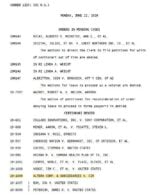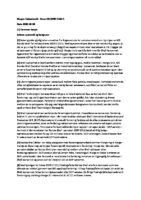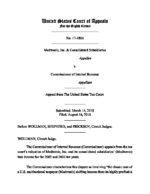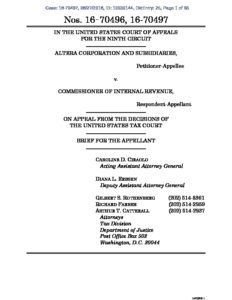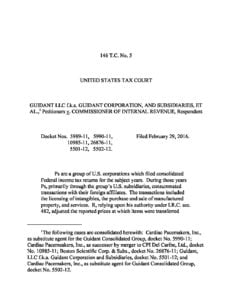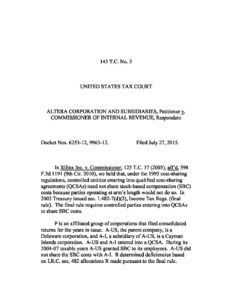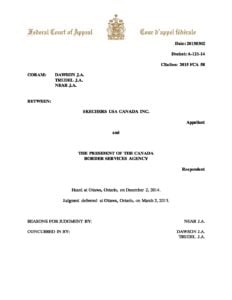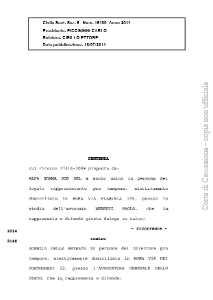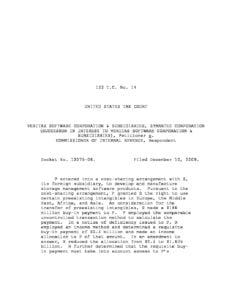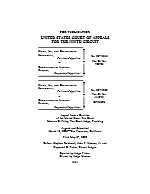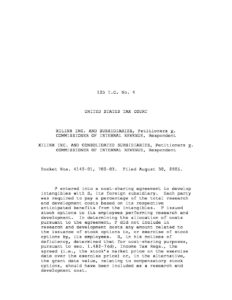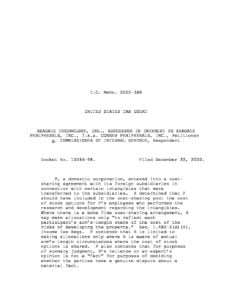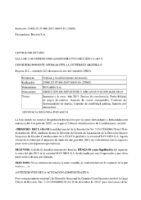
Bavaria S.A. is part of the SABMiller group – a multinational brewing and beverage group – and in FY2013 the company had deducted costs related to various intra-group transactions – licences, cost of sales, procurement services, administrative services, technical support, other expenses (reimbursements to related parties), etc. Following an audit, the Colombian tax authorities disallowed the deduction of some of these costs. Deductions for investments in productive assets were also disallowed. This resulted in additional taxable income and an assessment was issued together with a substantial penalty. Judgement of the Supreme Administrative Court The Court partially upheld the assessment and partially annulled it. Excerpts “At this point it is necessary to clarify that, although the Administration alleges the violation of the arm’s length principle, insofar as it considers that no independent third party, in a comparable situation, would have paid the commission under the conditions carried out by Bavaria, the truth is that this assertion is only supported by the fact that the DIAN questioned whether SABMiller Procurement actually executed the functions that corresponded to it under the Global Supply Agreement. In fact, it should be noted that neither the censured act nor the opposition to the complaint challenged the validity of the supporting documentation provided by the plaintiff, which included information related to the operation carried out with SABMiller Procurement within the framework of the Global Sourcing Agreement. In other words, with the exception of the question of the performance of the duties, the DIAN did not provide any substantive reasons to support the infringement of the arm’s length principle. There is no evidence in the file to show that the remuneration in favour of the foreign related party was not paid on market terms and, consequently, there is no support for the defendant’s assertion that an independent third party would not have paid the commission. It is extremely important to remember that, for the purposes of questioning the remuneration paid by a taxpayer in favour of a foreign related party for non-compliance with the arm’s length principle, the DIAN must exercise the broad powers of inspection granted to it by articles 684 of the Tax Statute and, particularly, the third paragraph of article 260-2 ibidem. Note that the jurisprudence of this Section13 has warned that, if in the exercise of its functions, the Administration detects irregularities in the transfer pricing study, it is obliged to contradict it through a similar report that calculates the common profit margins in the market for comparable operations, agreed between independent parties, However, there are no such documents in the file.” “Chamber notes that there is no dispute between the parties as to the nature of the expenses in question, as both agree that they correspond to administration expenses incurred by the plaintiff in favour of its parent company abroad. Likewise, the parties agree that the payments made by the plaintiff to its parent company were not subject to withholding tax as they were foreign source income. In these circumstances, it is not possible to accept the deductibility requested by the plaintiff (i.e. administration and management expenses to the head office or offices abroad) in the light of Article 124 of the Tax Statute, since for this it was essential that the expense had been subject to withholding tax, as has been held by the jurisprudence of this Section and the Constitutional Court. The fact that the plaintiff was subject to the transfer pricing regime does not change this conclusion, which, it is reiterated, the withholding tax referred to in Article 124 is not a limitation, but a condition or condition of acceptance, against which there is no exclusion whatsoever for taxpayers subject to the aforementioned regime. Finally, it should be noted that, contrary to the plaintiff’s request, the deductibility of the disputed expenditure cannot be analysed in the light of Article 122 of the Tax Statute. This is because the rule regulates the deductibility of payments abroad, as a generic restriction and not subject to economic linkage for expenses incurred abroad to obtain income from national sources and for concepts other than administration expenses in favour of the parent company or offices abroad, which are the ones at issue in the specific case. In this respect, Article 124 expressly provides that “(…) Payments in favour of such parent companies or offices abroad for other different concepts are subject to the provisions of Articles 121 and 122 of this Statute”. (highlighted by the Chamber). The charge is not upheld. Consequently, the disallowance of $47,834,099,000 for administrative operating expenses for administrative services is maintained.” “The evidence in the case file shows that, under the CSA, Bavaria took as expenses the sum of USD4,720,084 and that it recorded invoiced expenses for technical assistance of USD16,472,000, equivalent to USD30,627,037,436, the latter being reported as technical assistance expenses with its foreign affiliate, SABMiller Latin America (Miami), in the supporting documentation. These figures total USD21,192,081, which does not exceed the figure of USD24,573,83 that would correspond to Bavaria under the CSA. In turn, in the Official Review Settlement, in order to conclude that Bavaria had been assigned a percentage greater than 34.4% (which is 87.5% of the 39.3%), the DIAN said that the plaintiff assumed expenses corresponding to USD30,097,400, as a result of adding the allocation of USD13,625,400 made by SABMiller Miami to Colombia with the USD16,472,000 invoiced by SABMiller Miami Bavaria itself. However, the truth is that this addition is not justified in the CSA criteria, and in the official assessment accused, there is no explanation, at least in summary, to justify this sum. It is not possible to reach the conclusion reached by the DIAN in the official assessment accused, according to which Bavaria assumed or recorded technical assistance expenses of USD30,097,851.” Click here for English translation Click here for other translation 25000-23-37-000-2017-00654-01(25885)_20230323 NW


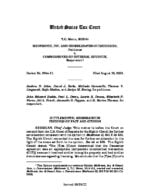
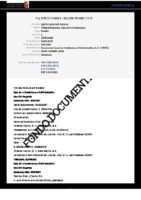
![Singapore vs Intevac Asia Pte Ltd, October 2020, High Court, Case No [2020] SGHC 218, Tax Appeal No 3 of 2020](https://tpguidelines.com/wp-content/uploads/Singapore-vs-Intevac-2020-sghc-218-no-3-of-2020-pdf-image-141x200.jpg)
